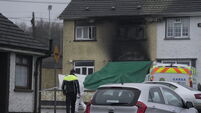Not every 999 patient may end up in hospital

Instead, some could now be sent to their GP, be brought to a local injuries unit — or diagnosed by phone.
A major Health Information Quality Authority report on the life-saving sector made the recommendation after finding a series of scandals in the system.
Speaking at the launch of the document, which can be read at www.irishexaminer.com, Hiqa’s chief executive Phelim Quinn said the group believes the alternatives should be considered.
While controversial, Mr Quinn said “100% transporting of patients to emer gency departments” is “unsustainable” and that 40% of 999 cases in other countries are seen to in this way.
However, the senior official also noted the move is also partially due to chronic gaps in the existing ambulance service and a 10% rise in calls in a year, which coupled with other issues mean the sector is at breaking point.
Among the crises uncovered by the 187-page report are:
-one in five ambulances are over eight years old and have 400,000km on the clock. While HSE rules state they should be replaced after seven years, the replacement is two years behind schedule, meaning the vehicles are breakdown risks;
- ambulances unable to leave hospitals because they are waiting for a doctor to take a patient waste 225 “lost vehicle days” every year, with the 30 minute timeline to leave repeatedly missed;
- no part of the country is meeting response times to life-threatening incidents, with just 58% and 34% of call-outs to cardiac cases and other emergencies since January 2013 meeting the seven minutes 59 seconds target. However, the lack of a “clinical audit” in the HSE means there is no record on the impact this has on patients;
- an advanced paramedics shortage is putting previous reforms at risk, while officials have been appointed to roles without training;
- areas in Galway, Mayo and Roscommon are ambulance “black spots”;
- 14,000 people were left in ambulance phone “queues” last year due to ongoing issues between Dublin Fire Brigade, which looks after the capital, and the national ambulance service;
Despite working in the same building, neither has any “oversight” on where each others vehicles are. They have been told to devise new plans to work more closely;
- and an official appointed to “re-configure and transform” the NAS has been “re-assigned”.
Siptu said the report has highlighted issues “identified as a concern over a long period of time”.
The National Ambulance Service Representative Association also welcomed acknowledgement of the clear problems “hampering” the system, saying “lack of staff and an aging ambulance fleet” puts lives at risk.
However, noting previous concerns were “dismissed” by senior management, NASRA said the issues must now be addressed.











